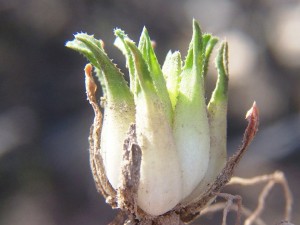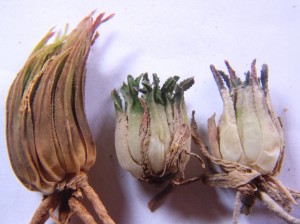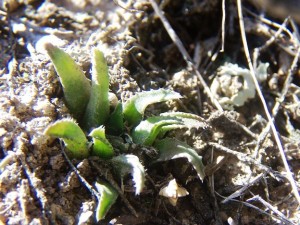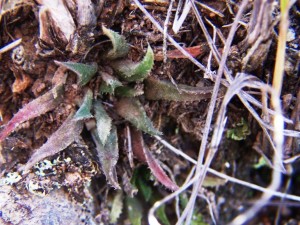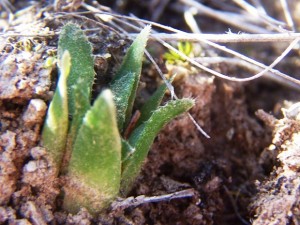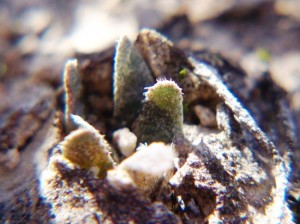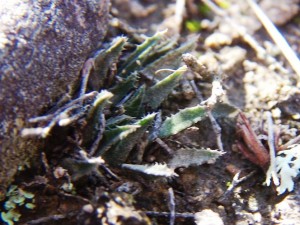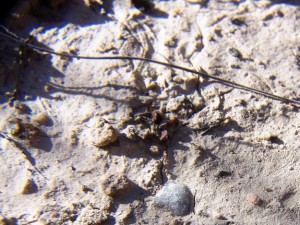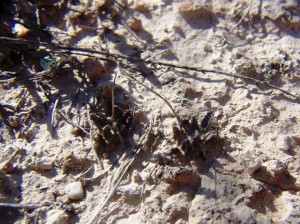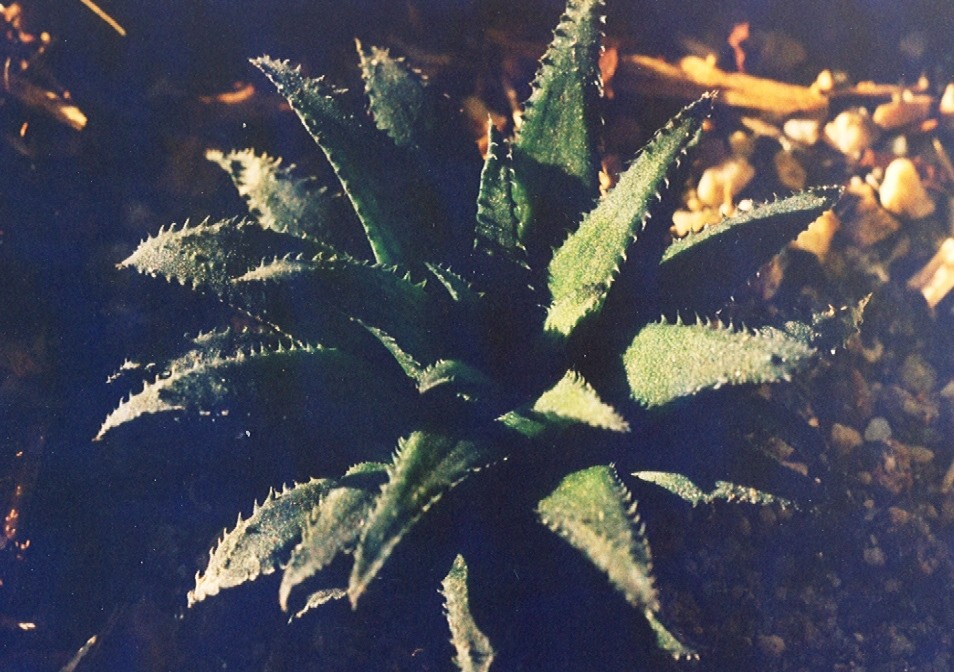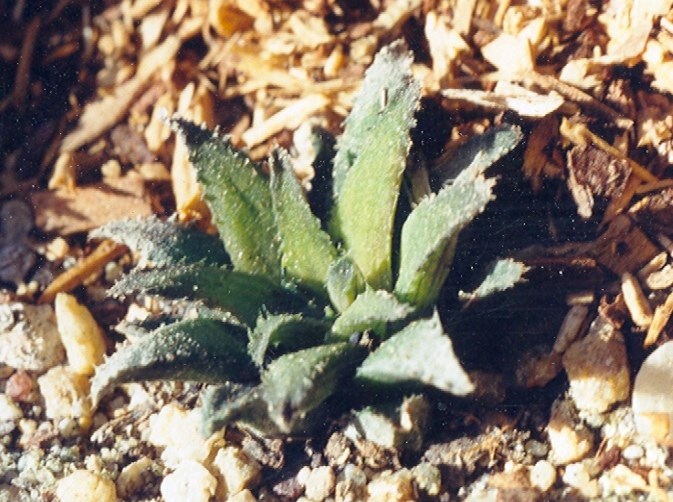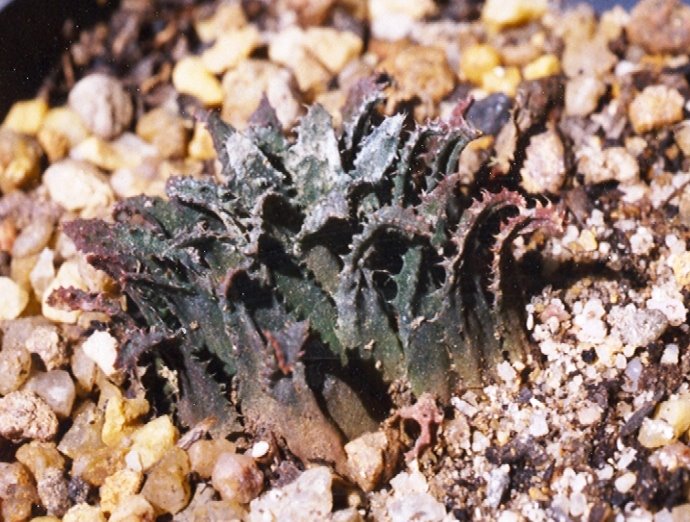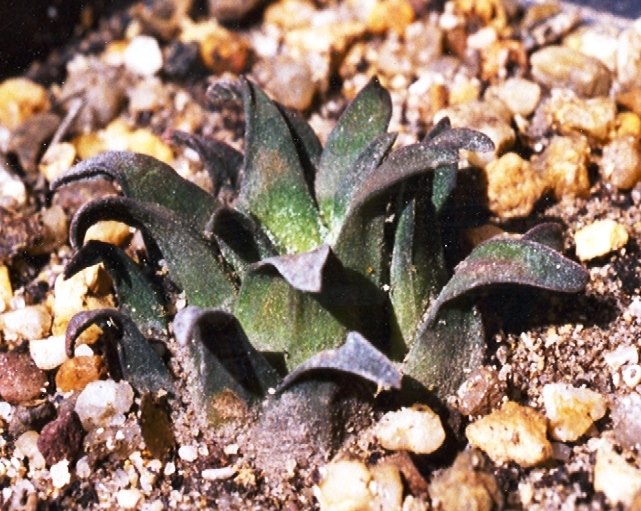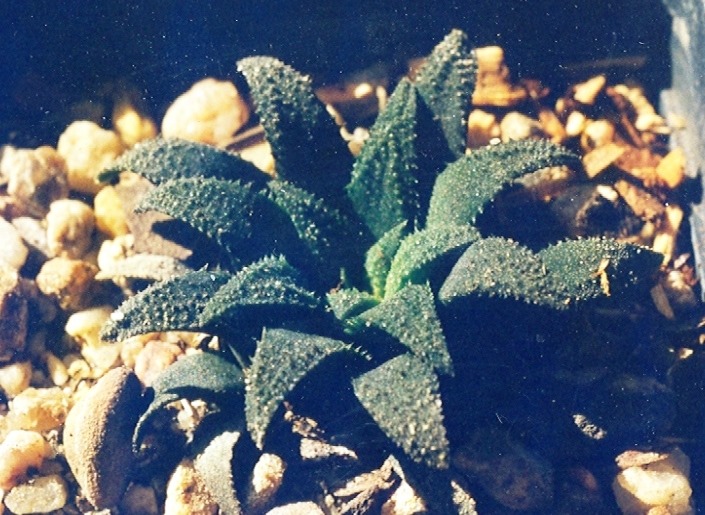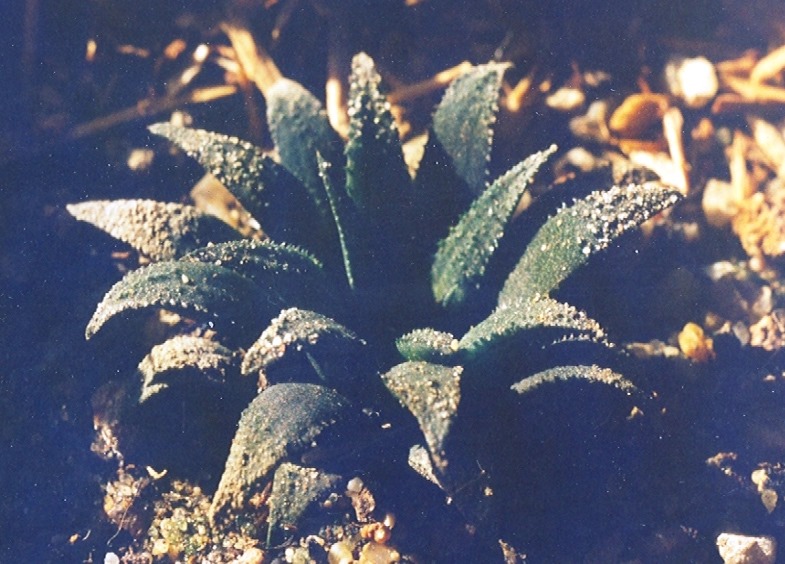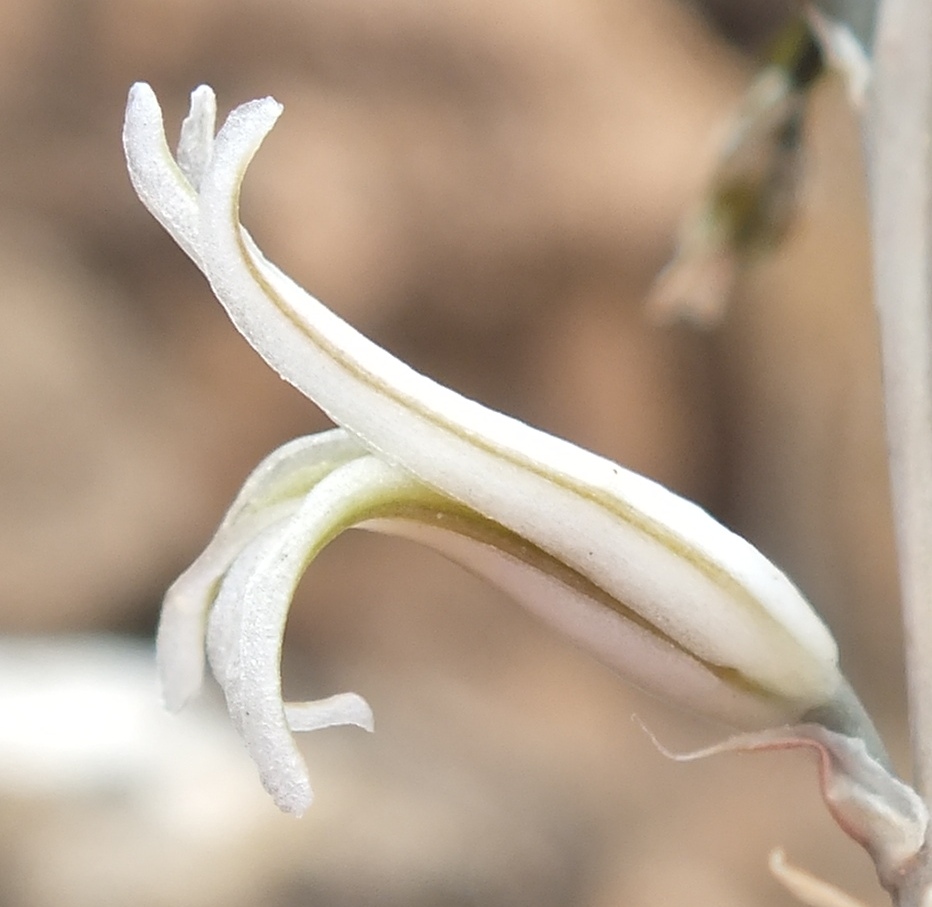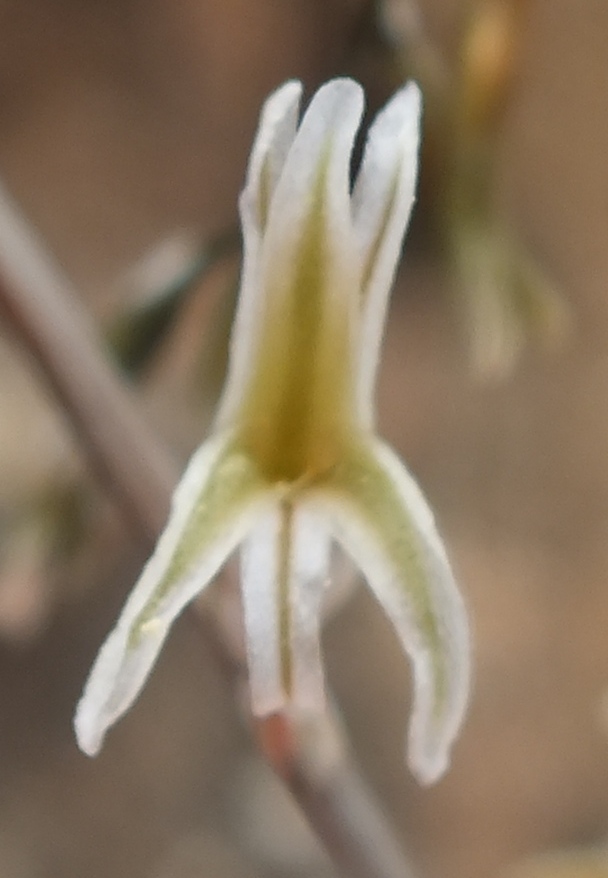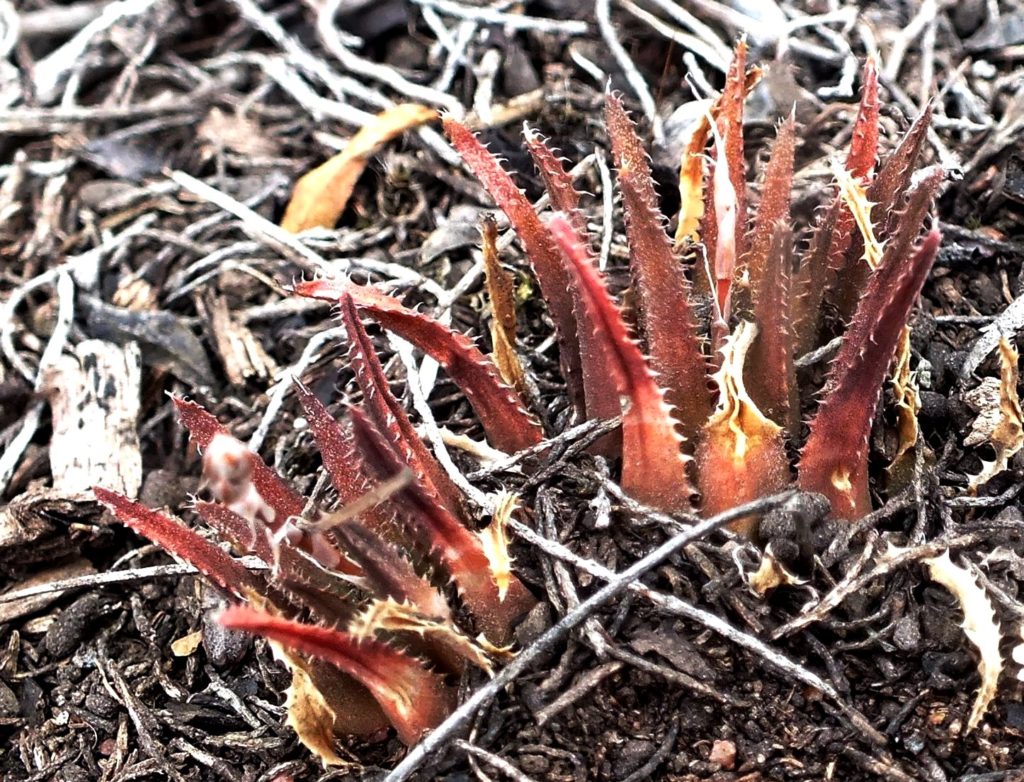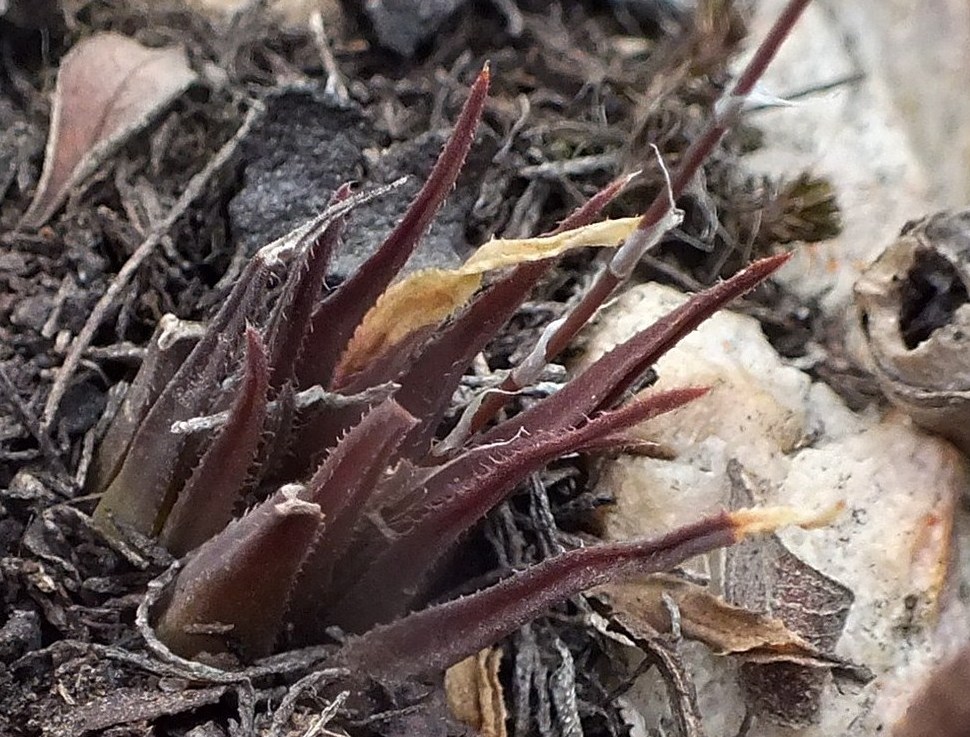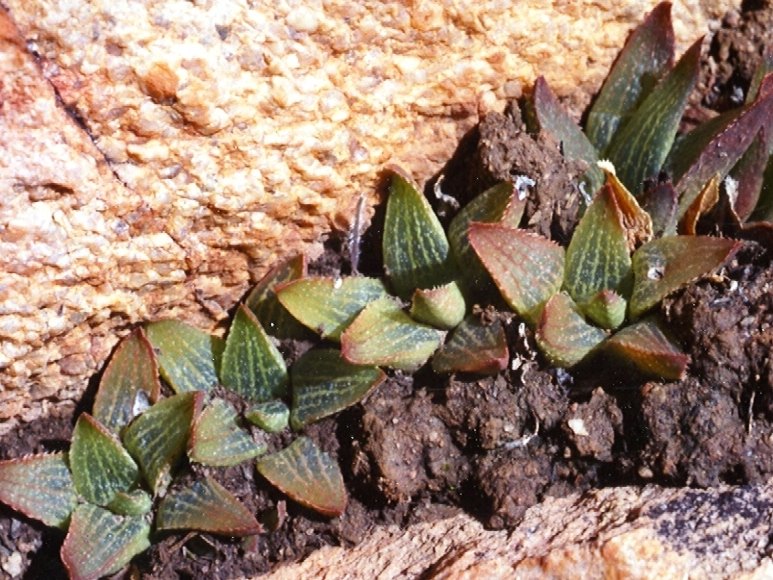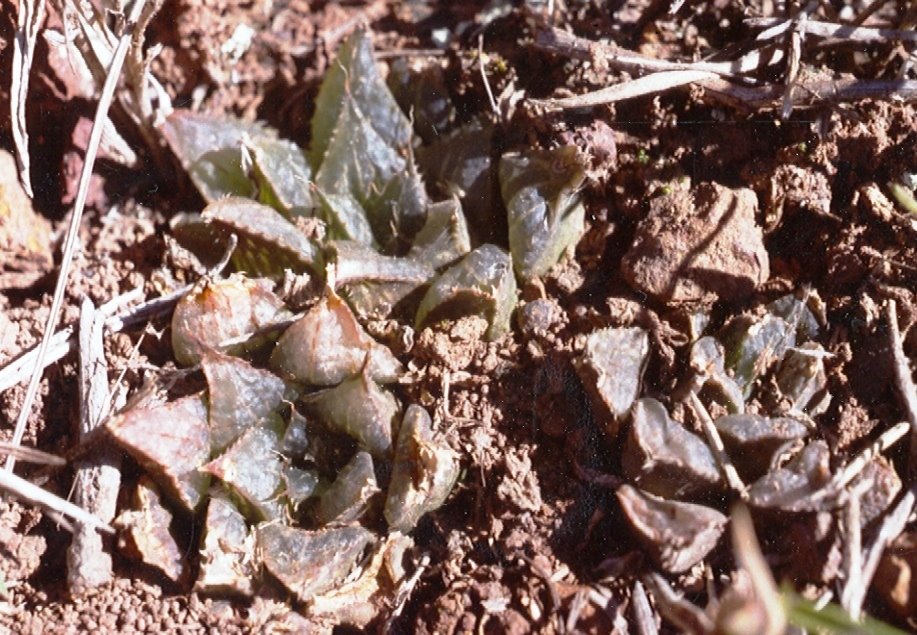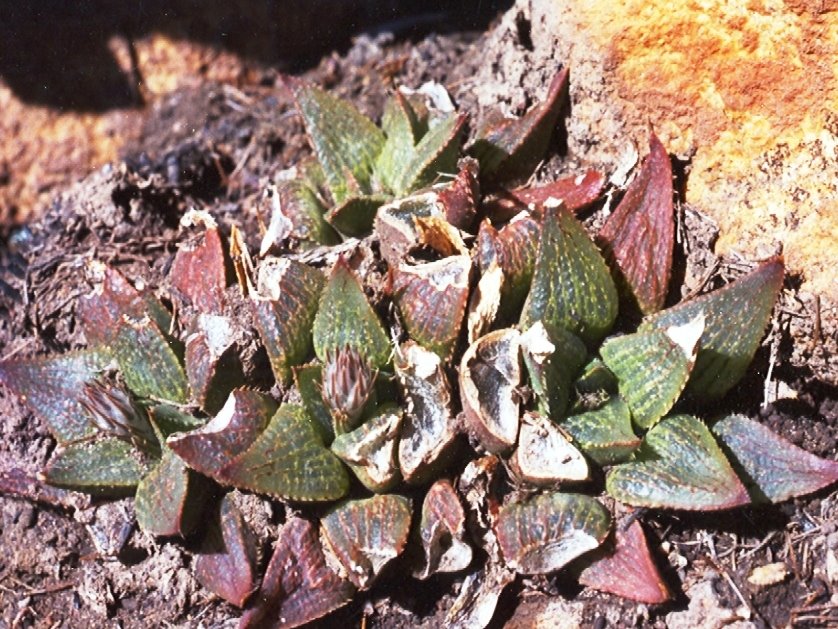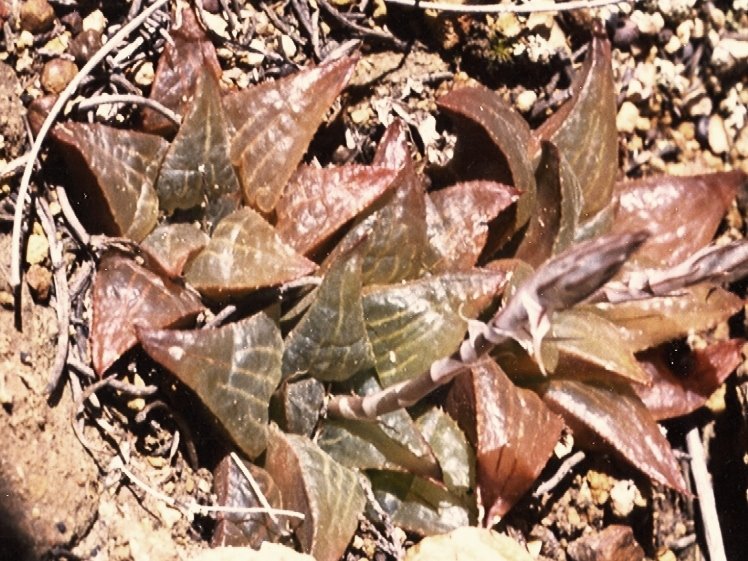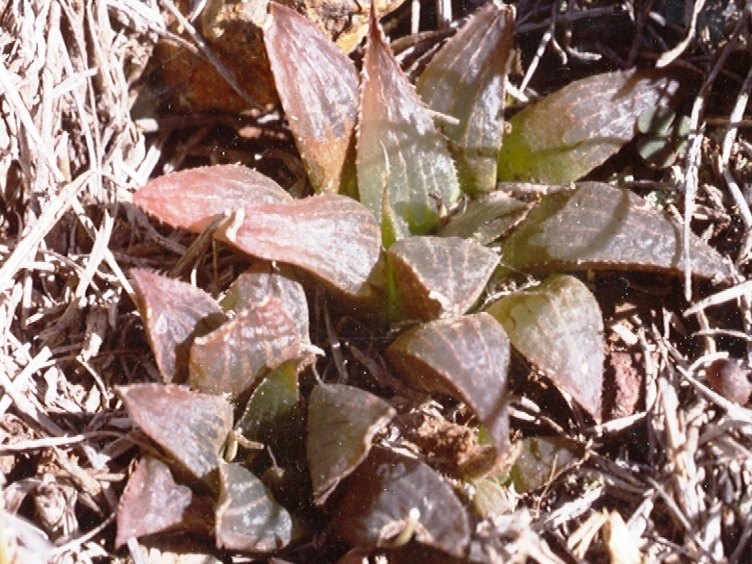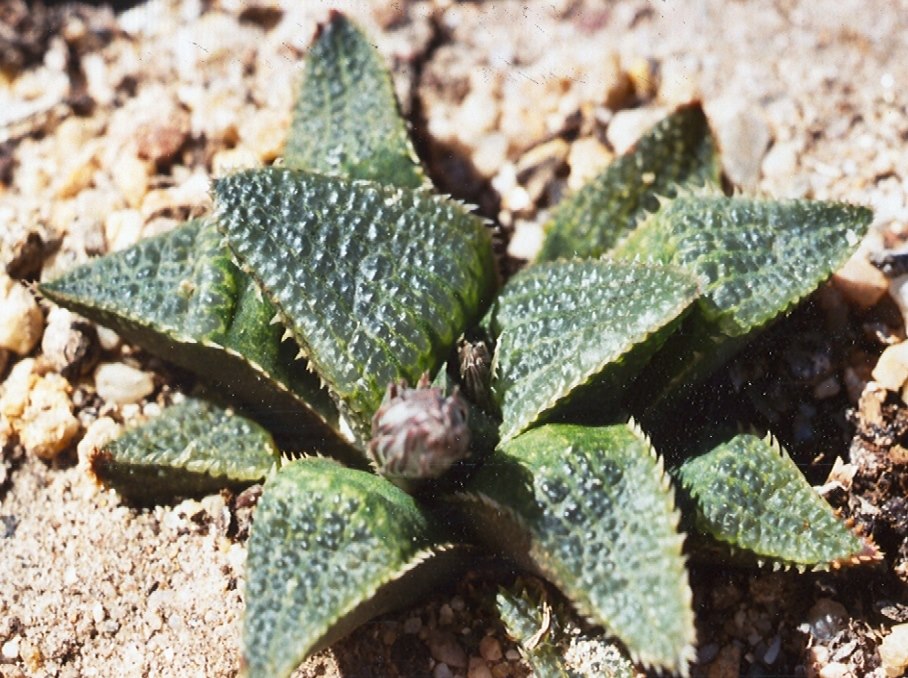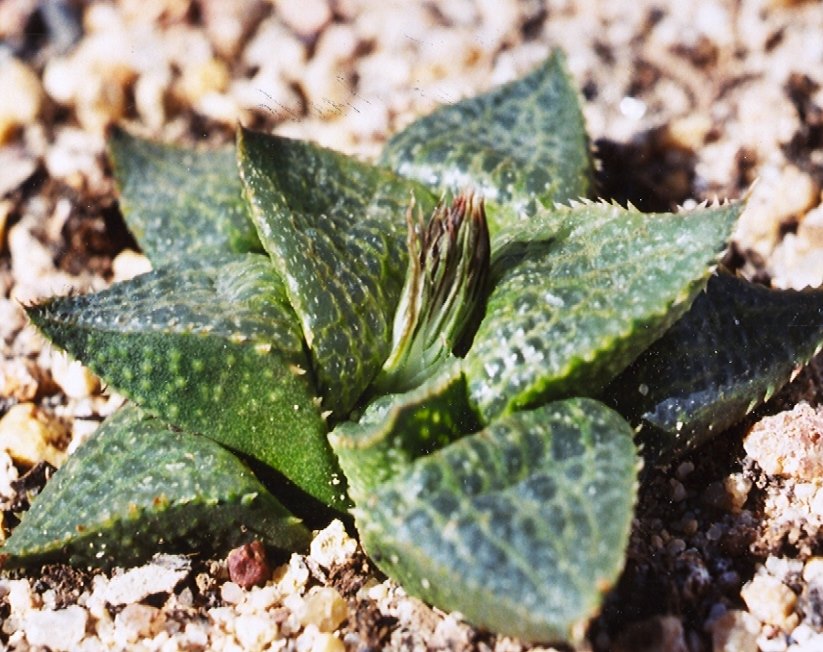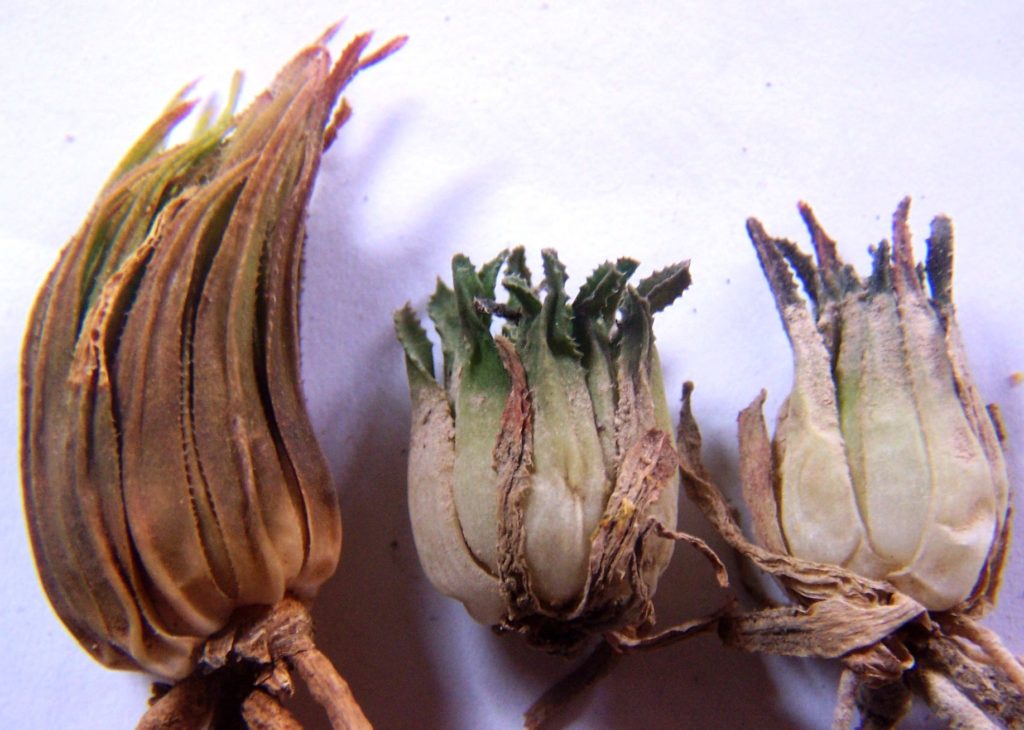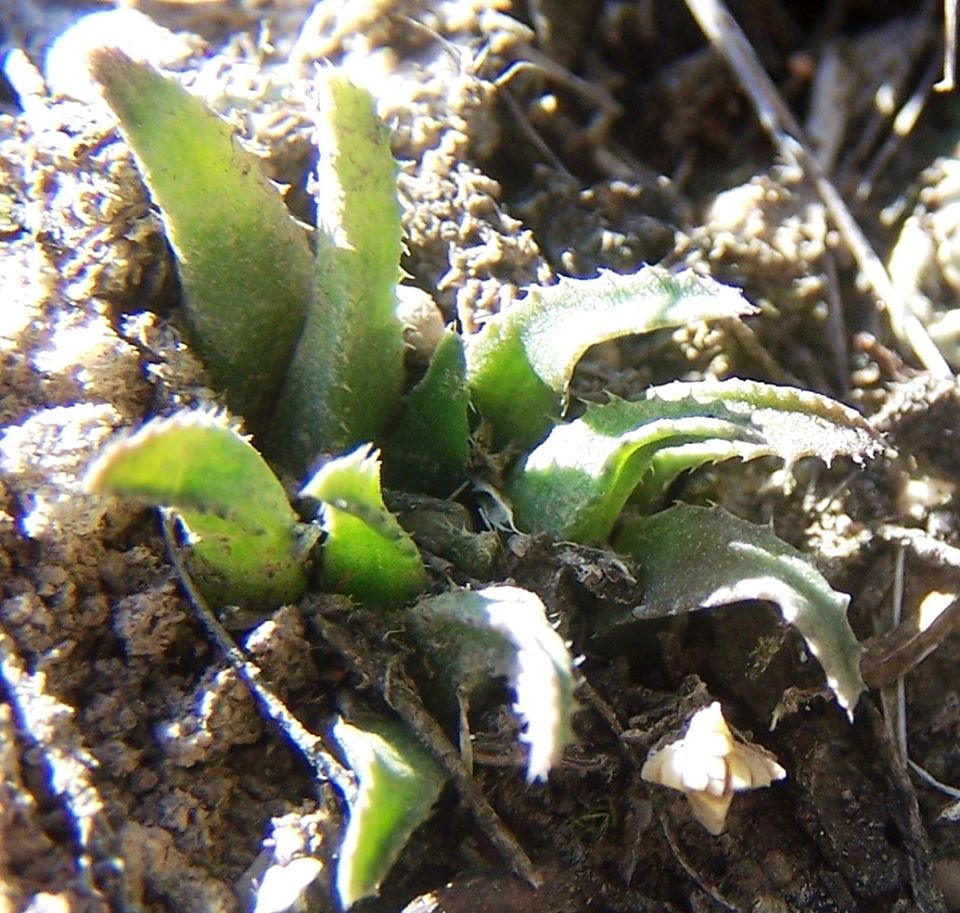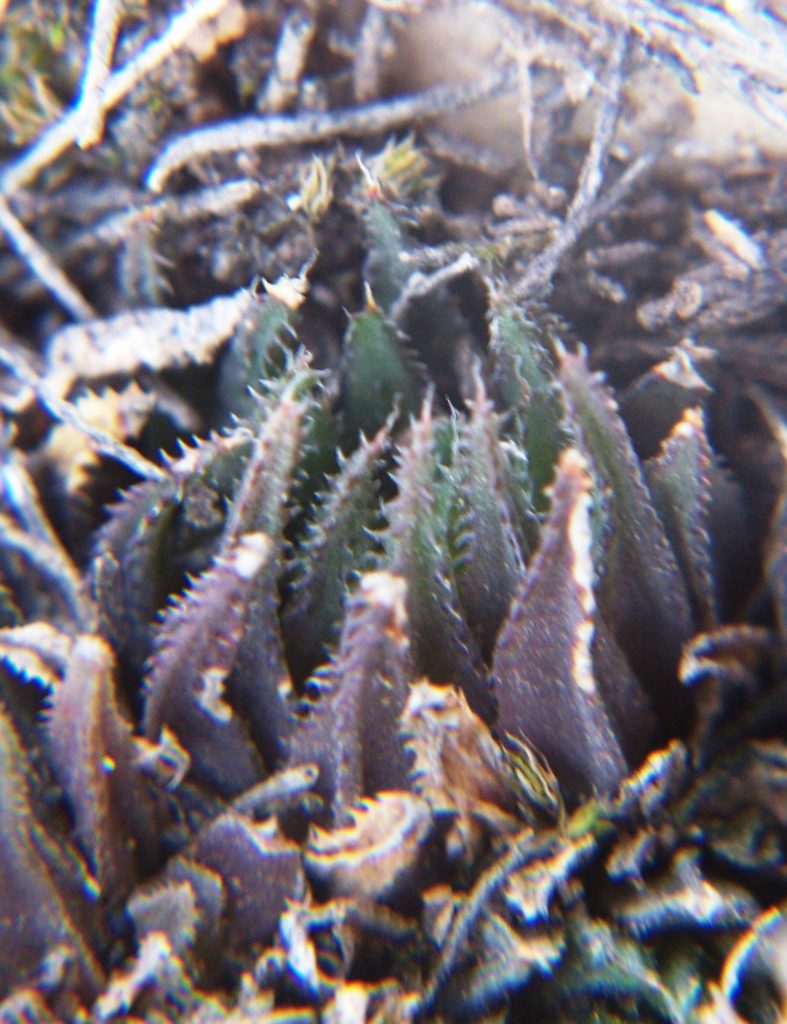7. Haworthia chloracantha Haw., Revis. :57(1821). Bayer :106(1976). Bayer :32(1982). Scott :52(1985). Aloe chlorocantha Roem. et Schultes, Syst.Veg. 7:641(1929). Salm-Dyck, Monogr. 13:f1(1836). Type: Not preserved. Neotype: icon, 13:f1 Salm-Dyck, Monogr. Epitype (ex B&M, designated here): N. of Herbertsdale, Bayer in KG411/75 (NBG).
chloracantha: green-thorned.
Rosette from 25-40mm φ, proliferous. Leaves: erect spreading, firm to slightly scabrid, triangular in cross-section, spines on margins and keel. Inflorescence simple raceme, lax. Flowers small.
1982 – H. chloracantha is a fairly localised species occurring in the Herbertsdale, Mossel Bay and Great Brak area. It occurs as three main varieties. Firstly the variety chloracantha from north and west of Herbertsdale which is a relatively robust light green form. The var. denticulifera is a smaller, usually purplish-green form found in and around Mossel Bay, while var. subglauca is a more robust waxygreen form from the granitic soils at Great Brak. Von Poellnitz, particularly, confused this species with H. angustifolia but it is slightly more scabrid and the marginal teeth are larger and wider apart. Although more robust, the var. subglauca may reach up to 60-70 mm tall with leaves up to 10 mm broad at their widest. The var. denticulifera may be as small as 30 mm tall with leaves less than 3 mm broad at their widest. The relationship between H. chloracantha and H. floribunda to the west is obscure. The Gouritz River valley effectively divides the two species but there are dubious populations north and south-east of Albertina which may suggest a relationship between these two species (see H. floribunda). However, it is unlikely that either H. floribunda, H. divergens or H. variegata will be confused with H. chloracantha.
1999 – This species was related to H. angustifolia even prior to the recognition of H. monticola ( H. divergens Bayer, 1982). H. chloracantha is more probably more directly related to H. floribunda and H. variegata, but it is also possible that the relationship of the varieties given here is incorrect and that the typical variety has weaker links with the southern Cape than the other two varieties. The new H. monticola var. asema from Calitzdorp, as well as the discovery of H. outeniquensis, also need to be taken into consideration.
It appears that the dark-green erect plants from southeast and east of Albertinia (Cooper Siding) should be regarded as H. chloracantha and not as H. floribunda. The population at Draaihoek to the north, includes plants which resemble H. parksiana and it may best be related to H. floribunda. Plants with erect leaves growing with H. parksiana at Groot Brak have been regarded as H. floribunda and it is more probable that they are in fact also H. chloracantha. It seems improbable that three similar species, in which the affinities with one another are in question, can co-occur.

a. var.chloracantha.
The typical variety is taken to be the very proliferous green forms around Herbertsdale and along the Gouritz River as it passes through the Langeberg mountains. While Breuer and Metzing do not use the Salm Dyck illustration to typify this name, that illustration and the icon in Bergers revision in Fas Pflanzenreich, are really the main sources for the application of the name.
Distribution:
3321 (Ladismith): Gouritz Gorge (-DC), Burgers 2317 (NBG) N. Herbertsdale (-DD), Bayer 411/75 (NBG). 3421 (Riversdale): Herbertsdale (-BB), Smith 5053, 5156 (NBG).

Haworthia chloracantha var. chloracantha JDV87/80 Hertertsdale. In cultivation, this variety often appears pale and chlorotic. 
Haworthia chloracantha var. chloracantha JDV97/138 Herbertsdale. The typical variety occurs only in this area and is always a plainer and yellower green.
b. var. denticulifera (V.Poelln.) Bayer
:112(1976). Bayer :32(1982). H. angustifolia var. denticulifera V.Poelln., Feddes Repert.Spec.Nov. 41:194(1937), ibid. 44:228(1938). Type: Cape, Montagu, Mrs Helm. Not preserved. Lectotype (B&M): icon (B).: H. angustifolia var. lilliputana Uitew. Sukkulenta 43(1953). Type: Not preserved. Neotype (designated here): CAPE-3422 (Mossel Bay): Hill above Mossel Bay (-AA), Courtenay-Latimer in Smith 5223 (NBG).
denticulifera: bearing small teeth.
This variety is dark-green and occurs around Little Brak and Mossel Bay. It also occurs along the lower Gouritz Valley where it has been previously assigned to H. floribunda. Von Poelnitz (1938) cited a number of improbable localities for this element as a variety of H. angustifolia. These included Montagu, Calitzdorp, Riversdale and Great Brak. It is generally concluded that the plants originated from the greater Great Brak area. Uitewaal’s smaller plants – var. lilliputana – are comparable with the population which occurs within the town of Mossel Bay itself. The specimen cited from the Duiwenhoeks causeway is also one with erect pointed leaves which draws the relation with H. floribunda into the discussion.
Distribution:
3420 (Bredasdorp): Duiwenhoks Causeway (-BD), Muller-Doblies 82/098 (NBG). 3421 (Riversdale): Cooper Siding (-BB), Bayer 3586 (NBG); 3km N Gouritzmond (-BD), Smith 7519 (NBG), Bayer 3586 (NBG). 3422 (Mossel Bay): 2km N. Mossel Bay (-AA), Smith 2896 (NBG); 1km N. Mossel Bay (-AA), Smith 3958 (NBG); Mossel Bay (-AA), Smith 5223, 5750 (NBG); Little Brak (-AA), Smith 5751 (NBG); Great Brak (-AA), Bouwer (NBG).
Inadequately located: ex hort. Armstrong in Smith 2830 (NBG).

Haworthia chloracantha var. denticulifera JDV88/17 Hartenbos. Usually a dark green plant with fine spination. 
Haworthia chloracantha var. subglauca JDV87/79 west of Great Brak. Sometimes almost bicoloured with reddish tips above the dark green leaves.
c. var. subglauca V.Poelln.,
Kakteenkunde 9:135(1937). Bayer :106(1976). Bayer:32(1982). Type: Cape, Great Brak, Mrs Helm. Not preserved. Neotype (B&M): Great Brak, Hurling & Neil (BOL).
subglauca: nearly glaucous.
As stated above, this variety differs in coloration from the other two varieties and in the larger sparser spines. There is a specimen cited rather vaguely as from near Zebra which could perhaps be H. outeniquensis.
Distribution:
3422 (Mossel Bay): Great Brak (-AA), Fourcade 18 (NBG), Hurling & Neil (BOL), Ferguson 1 (BOL), Smith 2889 (NBG); E. Great Brak (-AA), Smith 2885, 3957 (NBG); Bayer in KG(98/71 (NBG); George (-AA), Malherbe in NBG304/40 (NBG), Fourcade in NBG2617/34 (NBG).
Inadequately located: ex hort, Pillans (BOL). Heyn’s farm near Zebra, van der Bijl 474 (BOL).

Haworthia chloracantha var. subglauca JDV84/58 south of Great Brak. Larger leaves which are a waxy bluish colour. 
Haworthia chloracantha var. subglauca JDV94/3 north-east of Brandwacht. This population seems to be intermediate between vars. subglauca and denticulifera. Very dark coloured. 
Haworthia chloricantha var. subglauca JDV84/58 south of Great Brak. Plants can be very withdrawn into the soil.

